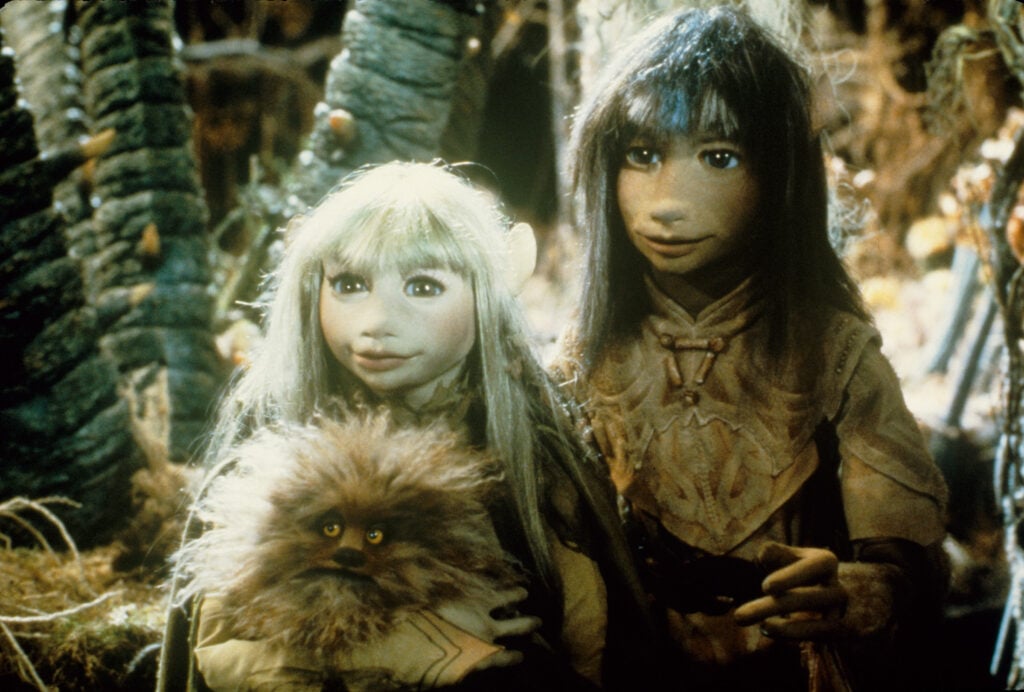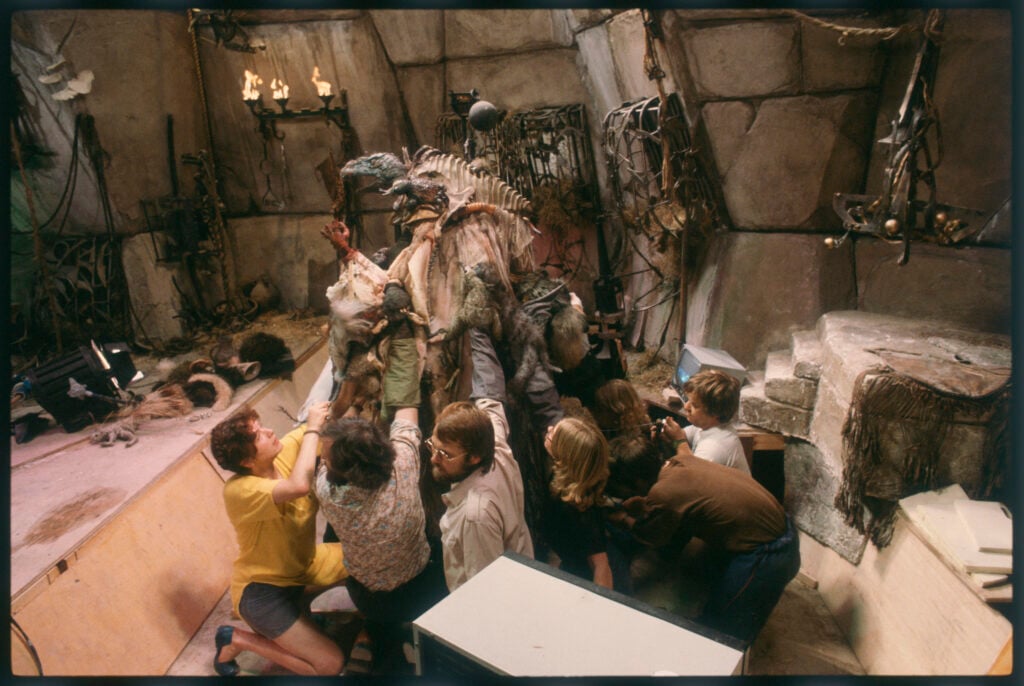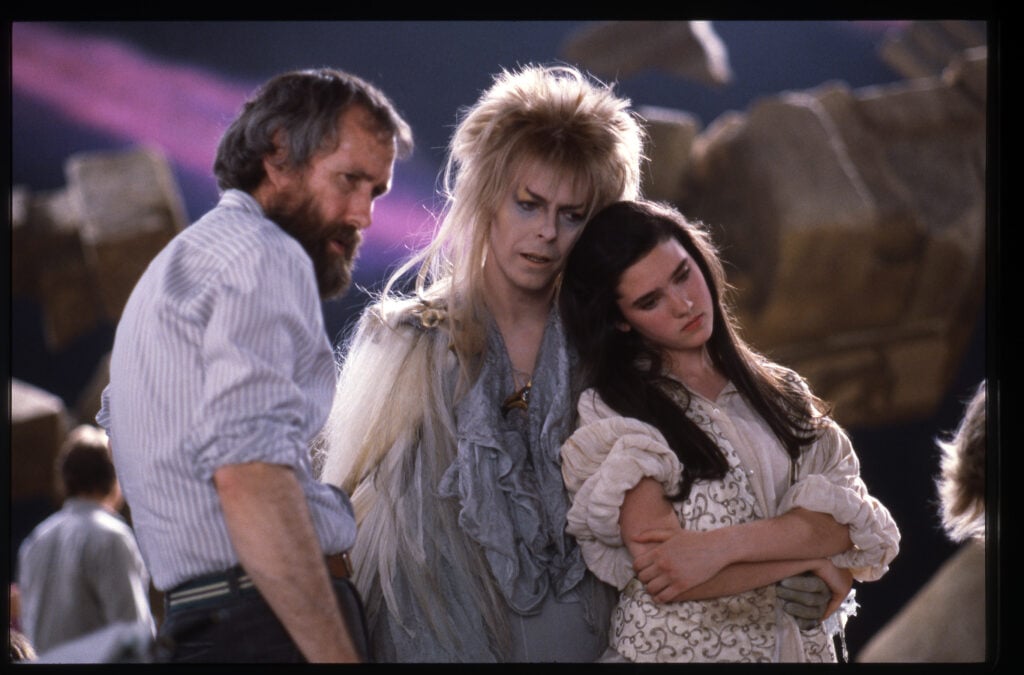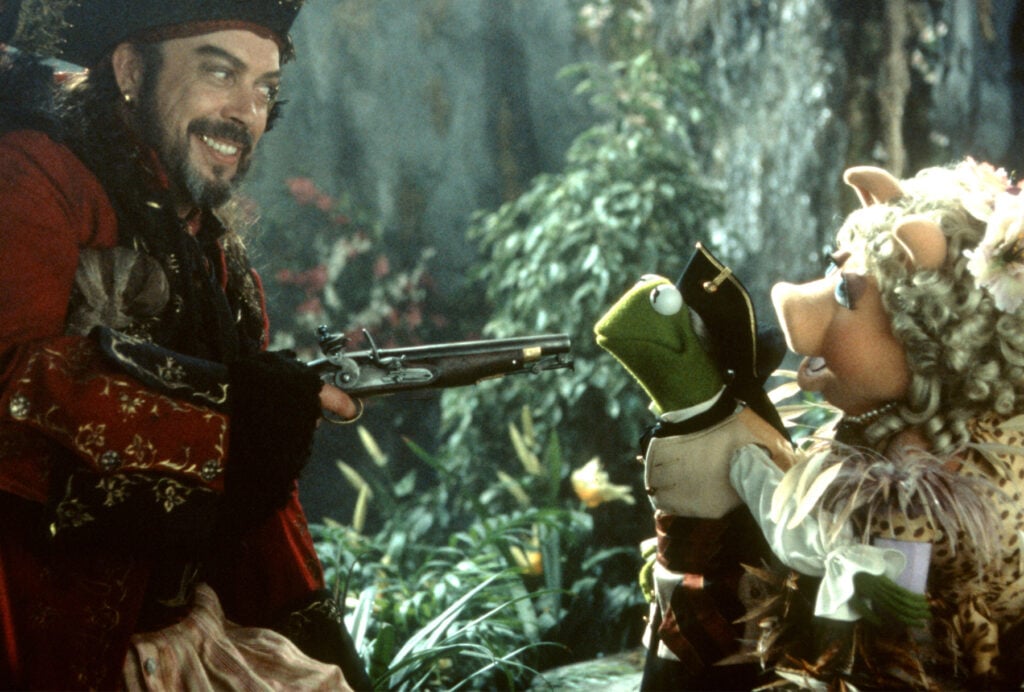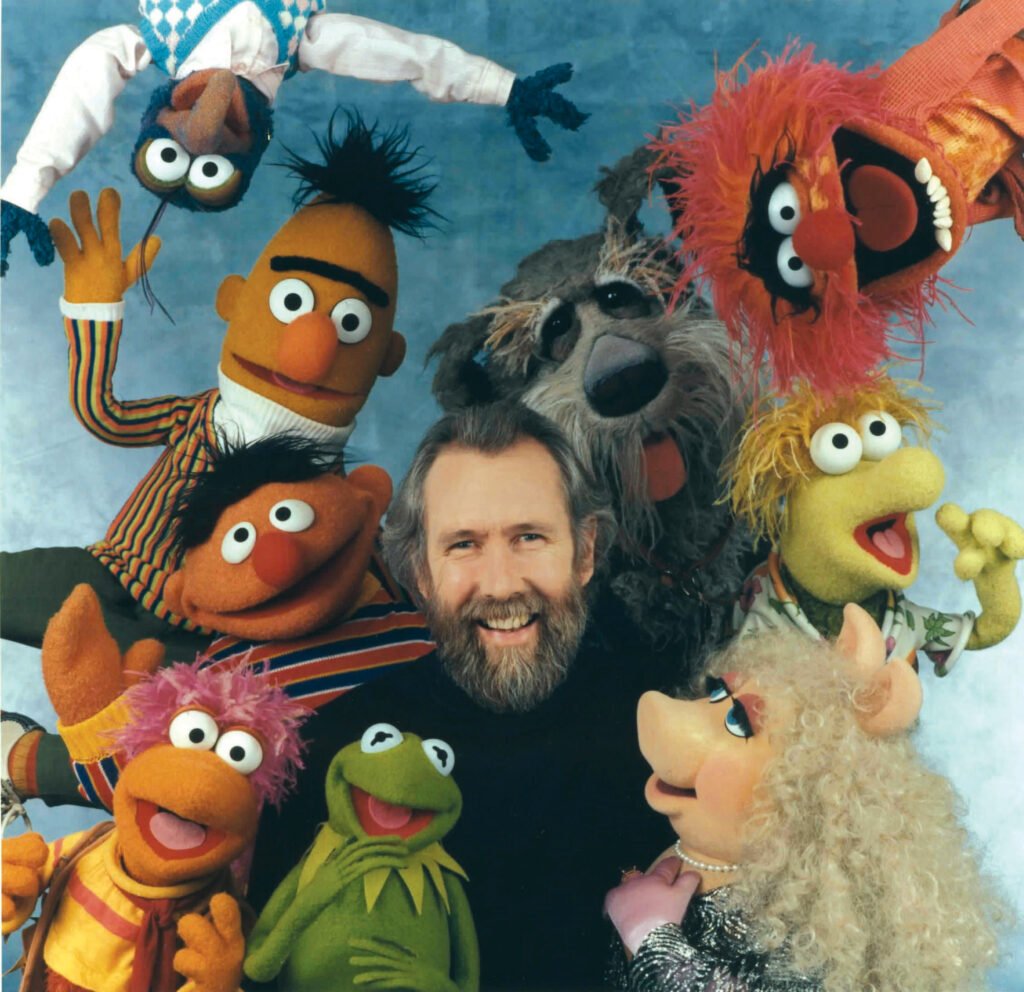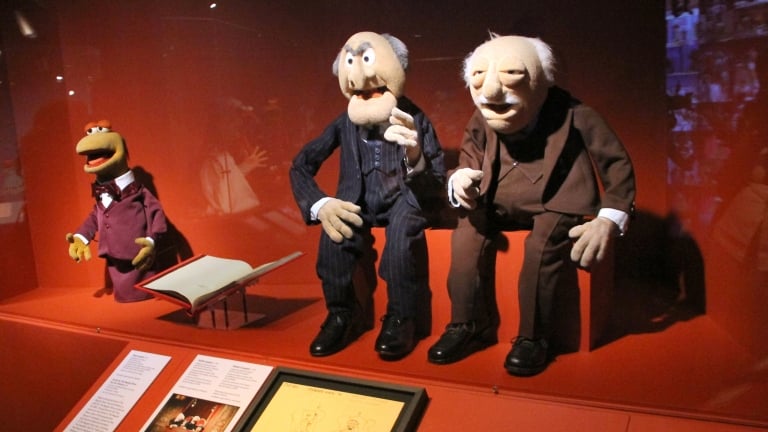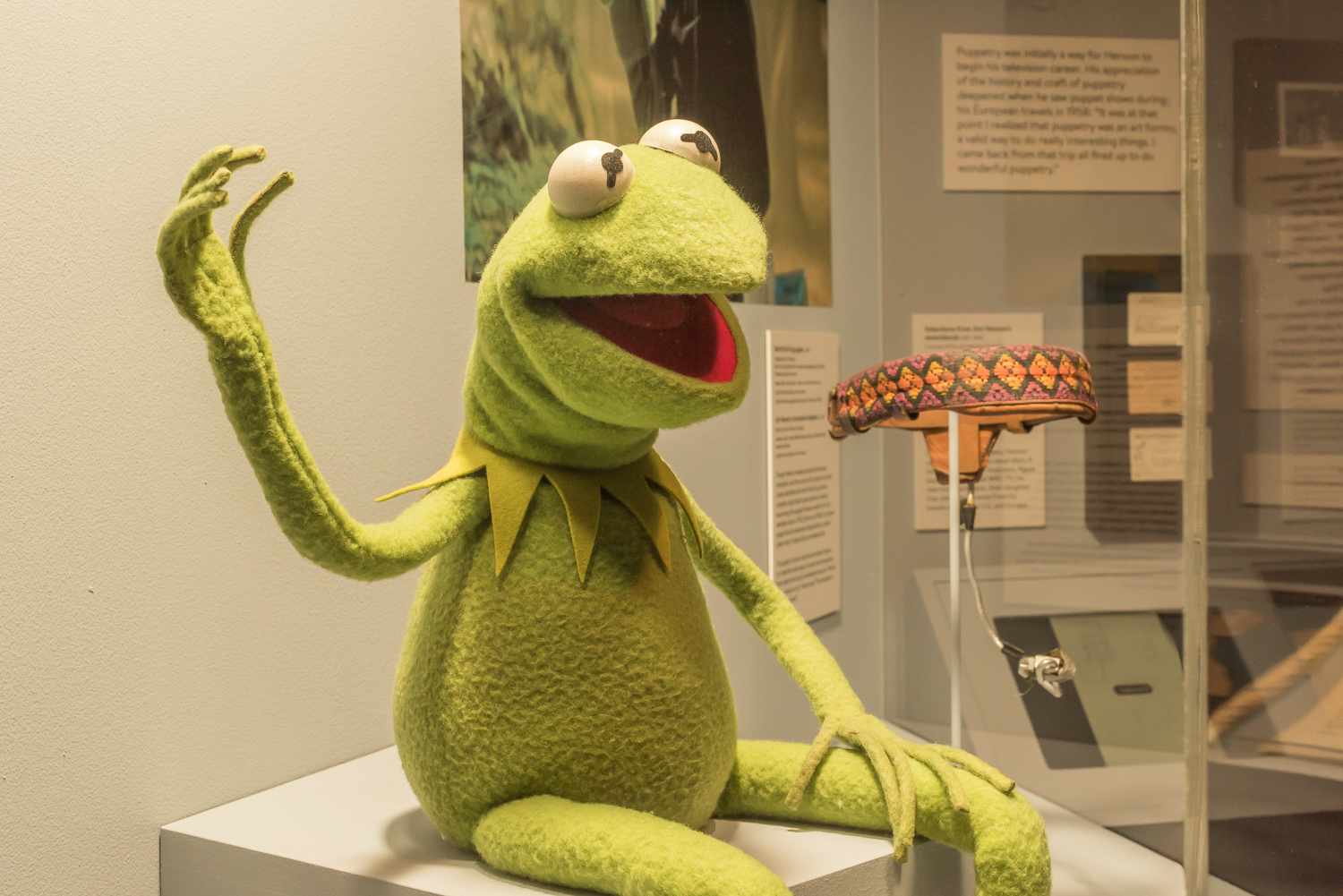Jim Henson
Since July 2017, Museum of the Moving Image has been proud to present The Jim Henson Exhibition, a permanent showcase of nearly 300 objects from the career of the beloved and revolutionary American artist. The exhibition explores Henson’s unique contributions to the moving image, and how he and a talented team of designers, performers, and writers created an unparalleled body of work. With his gently subversive humor, restless curiosity, and innovative approach to puppetry, Henson built the Muppets into an enduring international brand, contributed beloved puppet characters to Sesame Street, and applied his vivid imagination to stories for the big screen. The following online MoMI Story delves into the history, craft, and vision of this iconic figure, whose iconic puppet characters and stories for film and television left an indelible mark on popular culture, and which continue to captivate audiences of all ages long after his untimely death.
Beginnings
Jim Henson was born on September 24, 1936 in Greenville, Mississippi, and was raised in Leland, Mississippi, and Hyattsville, Maryland, near Washington, DC. His sense of humor and love of storytelling were rooted in his close-knit family life. Henson’s maternal grandmother, an accomplished amateur painter who also made clothes, needlepoint, and quilts, encouraged his early efforts to be a visual artist. Throughout his teenage years, Henson created cartoons, made posters and sets for his high school’s theater productions, and studied art and graphic design at the University of Maryland, where he started a successful poster business.
Puppetry was initially a way for Henson to start working in television. His appreciation of the history and craft of puppetry deepened when he saw puppet shows during his European travels in 1958: “It was at that point I realized that puppetry was an art form, a valid way to do really interesting things. I came back from that trip all fired up to do wonderful puppetry.” In his senior year of high school, Henson successfully auditioned for a job as a puppeteer on an upcoming local television series, The Junior Morning Show. His work attracted the attention of one of the producers, who invited him to perform his handmade puppets on several variety shows on WRC-TV, the local NBC affiliate. A year later, Henson and his college classmate Jane Nebel—whom he had met in a puppetry class at the University of Maryland in 1954—created a five-minute puppet show for WRC-TV called Sam and Friends, launching Henson’s career when he was just 18 years old, and earning an Emmy Award for Best Local Entertainment Program of 1958.
In addition to performing at WRC-TV, Henson designed and built sets, and studied the work of the station’s directors, camera operators, and editors. Puppets on early television shows typically appeared much the same way as they did in live theater, with puppets framed by a proscenium. Henson’s approach to puppet performance used the television screen as if it were a stage. As they performed, Henson and his fellow puppeteers watched themselves on a monitor and tailored their performances to the screen.
Sam and Friends, which aired until 1961, was a tremendous success and marked the beginning of Henson’s career. This period also saw the fledgling company he started with Nebel grow to include a core group of talented designers, builders, writers, and performers, who shared his willingness to experiment and his commitment to creative collaboration. As he continued to work on Sam and Friends, Henson finished college, took an extended trip to Europe, and started making television commercials featuring his puppet characters. He also married Nebel, and became a father.
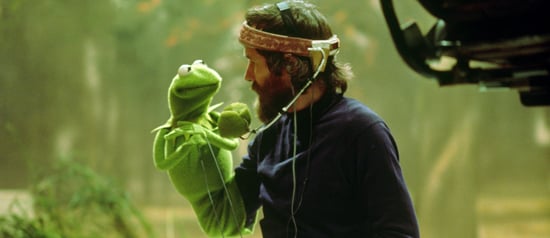
Kermit the Frog
Kermit, with whom Henson is most closely identified, was among the puppets Henson made for his first television show in 1955. Originally a light bluish-green abstract creature, the Kermit puppet had its trademark characteristics by the mid-1960s: a bright green color, fringed collar, and webbed feet. A put-upon “straight man” character who would become the de facto—sometimes hesitant—leader of an ever-expanding group of Henson’s characters, Kermit would appear on Sam and Friends, and later Sesame Street, The Muppet Show, and the popular series of theatrical Muppet movies that would be among Henson’s most recognizable entertainments.
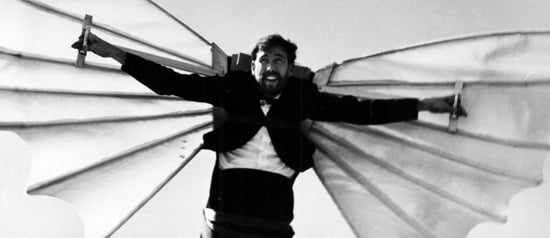
Commercials and Experiments
Beginning in the late 1950s, Henson and his company created hundreds of unconventional television commercials and corporate films, all of which showcase Henson’s characteristic humor, irreverence, and inventiveness. These ads helped him reach a large audience, and the income from this work made it possible for Henson to develop experimental film projects and long-form television shows.
In 1957, Henson made a series of eight-second commercials for Washington, D.C.–based Wilkins Coffee Company, featuring Wilkins, an obliging, coffee-loving character, who often cheerfully blows up the obstinate Wontkins. The offbeat humor and the novelty of using puppets in television ads appealed to other companies, and the Wilkins and Wontkins puppets were used to sell more than a dozen other brands across the country.
Rowlf was built in 1962 for Purina Dog Chow commercials and rose to fame in the mid-1960s as a show-stealing comic sidekick on the ABC series The Jimmy Dean Show. Rowlf represents several important “firsts” for Henson’s company: the first Muppet to achieve national popularity, the first Muppet built by Don Sahlin, and the first puppet that Henson and Frank Oz performed together.
Delbert the LaChoy Dragon, created in 1965 for commercials advertising LaChoy Chow Mein, was originally a hand puppet. The following year, Henson built a full-body version, which allowed the helpful but clumsy character to move around the set. It was one of Henson’s first full-body puppets, and was performed by Frank Oz with Henson providing the voice. Don Sahlin created the effect of “dragon fire” erupting from the puppet’s mouth.
By the summer of 1965, the company at Muppets, Inc. comprised Henson, writer/performer Jerry Juhl (who joined in 1961 to take over Jane Henson’s performing duties), performer Frank Oz (who joined in 1963, at age 19, already an experienced puppeteer from years of performing with his family), puppet builder Don Sahlin, and secretary Jay Campbell, working out of a small office on East 53rd Street in Manhattan.
Despite all this success, Henson was creatively restless and began work on Time Piece—a puppet-less film that combined live-action footage with animated effects, and was unlike anything he had made before. Though his staff at Muppets, Inc. helped with the production, the nine-minute film was a very personal project. Henson stars as a beleaguered “everyman” running from the relentless march of time and the mundane routine of his conventional life. Henson expressed similar concerns in “Tick-Tock Sick,” a spoken-word novelty song that he recorded in 1960. Time Piece was released in 1965 and nominated for an Academy Award for best short subject.
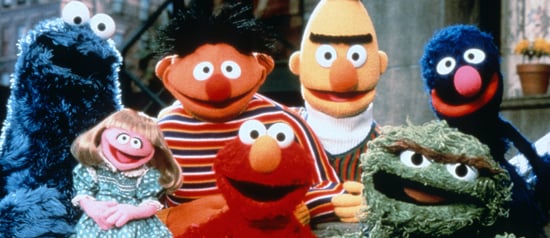
Sesame Street
In the summer of 1968, Jim Henson joined the team of educators, writers, and producers developing Sesame Street. He was initially reluctant to work on the series because he did not want to be pigeonholed as a children’s performer. Henson, who had four young children at the time, was won over by co-creator Joan Ganz Cooney’s vision of a show for preschoolers that would be both educational and fun to watch.
The puppet characters Jim Henson and his company would create for Sesame Street were essential to the success of the groundbreaking educational television show. Henson also made live-action and animated films for the series’ first two seasons, which combined educational instruction with his trademark humor and visual style. Within a few years of Sesame Street’s debut, international co-productions of the series and toys featuring Sesame Street characters turned Henson’s puppets into a worldwide brand.
Henson’s participation in Sesame Street increased his roster of puppets, led to new creative collaborations, and cemented relationships forged during earlier projects. Some puppets, like Ernie and Bert, were created for the show, while others, like Grover and Cookie Monster, had origins in Henson’s commercials and variety show appearances. Puppeteer Jerry Nelson, who had worked with Henson in the mid-1960s, came back on board in 1970 to perform various characters on Sesame Street, and remained professionally involved with Henson’s company for the rest of his life. Henson hired Caroll Spinney, Fran Brill, Richard Hunt, and other new puppeteers, and expanded his team of designers and builders to create the many puppet characters who populate Sesame Street.
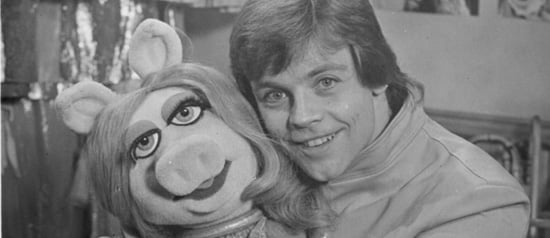
The Muppet Show
Jim Henson had an enduring ambition to create a variety show featuring the Muppets. The realization of this, The Muppet Show (1976-1981), combined musical performances, celebrity guest appearances, and comedy sketches in a vaudeville-inspired format. The Muppet Show was broadcast in more than a hundred countries and watched by hundreds of millions of viewers each week.
Miss Piggy was designed and built by Bonnie Erickson (who initially named her Miss Piggy Lee, after the singer Peggy Lee) in 1974 for The Muppet Show: Sex and Violence, which aired in 1975. Miss Piggy’s first television appearance was on The Tonight Show in May 1974; a few months later she played a seductive starlet on the television special Herb Alpert and the Tijuana Brass. By the end of the first season of The Muppet Show, Frank Oz’s extraordinary performance of Miss Piggy as a temperamental force of nature and Kermit the Frog’s love interest established her as a central character in the series.
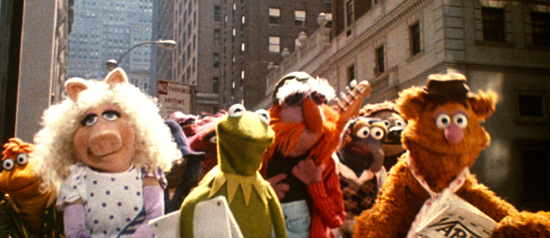
A Bigger Canvas
By 1978, The Muppet Show had aired for two seasons, and the Muppets were international sensations. Wanting a larger canvas for his characters, Henson began work on a film that would bring the Muppets out of the variety show set and into the real world. The Muppet Movie (1979) presented Henson and his company with the unprecedented challenge of making a feature film starring puppets that interacted with humans in natural settings. The film was a box-office success, and several more Muppets feature films followed. By the early 1980s, Henson’s puppet characters were worldwide cultural icons.
Throughout the 1980s, Jim Henson developed complex stories that required more elaborate scales of production. The movies The Dark Crystal (1982) and Labyrinth (1986), and the cable television series Fraggle Rock (1983–1987) all present fully realized imaginary worlds and made use of innovative technology that enabled Henson and his fellow performers to experiment with new forms of puppetry.
The Dark Crystal was an ambitious project that presented Jim Henson and his company with unique creative and technical challenges. Henson worked closely with artist Brian Froud to conceptualize the richly detailed environment populated by fantastical creatures, and invited Frank Oz to co-direct the film with him. To make the all-puppet cast as expressive as possible, Henson company designer Franz “Faz” Fazakas led a team of animatronic experts to refine the radio-control systems that they had developed for earlier projects.
Fraggle Rock was conceived by Henson as a television series that could promote international cooperation. A co-production between Henson’s company, England’s Television South, the Canadian Broadcasting Corporation, and HBO, the series features puppet characters that belong to three distinct but interdependent species—Gorgs, Fraggles, and Doozers. Henson’s company devised radio-controlled animatronic technology for puppeteers to perform the tiny Doozers and giant Gorgs. Fraggle Rock debuted in 1983 and has been broadcast in nearly 100 countries.
The feature-length musical film Labyrinth was Jim Henson’s second collaboration with concept artist Brian Froud. Froud and Henson’s London-based Creature Shop crafted inventive puppet characters that played supporting roles to stars David Bowie and Jennifer Connelly. Henson directed the fantasy film, which was executive-produced by George Lucas.
In the last few years before his untimely death at age 53 in 1990, Jim Henson was busy with a wide range of film and television projects. Some of these—such as his series The StoryTeller (1987-1989)—appeared as part of The Jim Henson Hour (1989), an NBC anthology series that he hosted. Other projects included The Ghost of Faffner Hall (1989), an HBO music education series; The Witches (1990), a feature film based on the Roald Dahl novel; and animatronic creature design for the Teenage Mutant Ninja Turtles (1990) movie. Throughout his career, Henson pushed the limits of technology in order to realize the stories he wanted to tell. His work lives on.
Enjoy the following recording of one of our many special online Jim Henson's World events with Craig Shemin, President of the Jim Henson Legacy.

